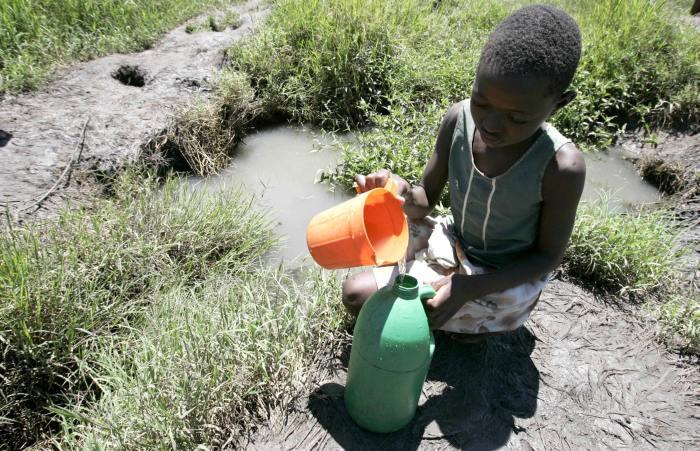Zimbabwe’s Water Crisis
A girl collects drinking water from a stream in Glen Norah, Harare November 27 2008. Zimbabwe, which is battling a serious cholera outbreak amid a worsening economic crisis, is set to get vaccines from China to fight the disease, state media reported on Thursday. REUTERS/Philimon Bulawayo (ZIMBABWE)
October 4, 2019
How much water do you use daily? Surprisingly, the average U.S. citizen uses 80-100 gallons. The people of Zimbabwe, however, must use the least amount of water and goods they possibly can. Just 30 gallons in Zimbabwe would be considered a huge amount. Because of the shutting down of the main water treatment plant and symptoms of climate change, Zimbabweans have many issues coming in their survival. The shortage of water has become a yearly problem in Zimbabwe, but this year’s drought is distinctly serious because it has occurred earlier in summer and affected even more people than usual. The officials of Zimbabwe say that “Between 45 and 60 percent of the water that was left was lost from leakage or theft.” However, the water crisis is only part of Zimbabwe’s crisis, as their economy is going into a steady plummet. The New York Times says that “Years of mismanagement under Robert Mgabe… [has] left the economy in tatters. Residents are battling daily blackouts…”
Droughts have caused Zimbabweans to use the tap only once a week. Most dams in Zimbabwe are polluted and have chemicals that are harmful to people to use. “We hardly have water in our taps. We pray daily that the cholera outbreak does not recur. A few boreholes were dug, but you have to queue for long to get water, yet we have other things that we have to queue for in our lives,” says Tambudzai Murwa says, a citizen living in the Harare township.
Zimbabwe is in a pretty tough spot right now, their economy is shattering because of the drought they currently have, and the fact that they are trying to get rid of foreign currency, which just makes it harder for them to import goods. However, there are many people in Zimbabwe that are working to make their country a better place for all the people living there. While the problem seems far away, there may be things that Green Level HS can do to help. Funding support and help in the form of resources might do some good.
For Further Reading:
“How We Use Water.” EPA, Environmental Protection Agency, 5 Feb. 2018, https://www.epa.gov/watersense/how-we-use-water.
A website that goes over how the US is using water and for what reasons.
Kingsley, Patrick, and Jeffrey Moyo. “In Zimbabwe, the Water Taps Run Dry and Worsen ‘a Nightmare’.” The New York Times, The New York Times, 31 July 2019, https://www.nytimes.com/2019/07/31/world/africa/zimbabwe-water-crisis.html.
This website by NY Times discusses how the crisis really is like a nightmare and how the situation can be impactful to many in Zimbabwe. Prices of medicine, bread, and many more good have increased and it is difficult to survive there.
Mavhunga, Columbus S., and Bukola Adebayo. “Zimbabwe’s Water Woes Worsen as Capital Shuts down Treatment Plant.” CNN, Cable News Network, 24 Sept. 2019, https://www.cnn.com/2019/09/24/africa/harare-water-crisis-intl/index.html.
This website by CNN persuades and informs the audience about Zimbabwe’s crisis with water
and how the shortages of it can be a huge impact on the country. Many food organizations,
agencies, and donors are funding them along with $331 Million.









